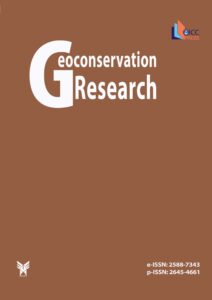
The concept of the volume is to survey all the key geoparks throughout Europe in terms of their palaeontological significance. The second set of 36 articles in this Part cover the long span of geological time from the Triassic to the Quaternary, arranged in chronostratigraphic order. These document some of the most important stages in […]
Idrija UNECO Global Geopark embraces the area of Idrija Municipality in the western part of Slovenia, with an area of 294 km2. Its main town Idrija, with a famous mercury ore deposit beneath, has always been a home to several European naturalists, who explored natural features, plants, animals and fossils of the area since the […]
The Triassic reptile Eifelosaurus triadicus is an icon of the Geopark Vulkaneifel and the Natural History Museum of Gerolstein (West Eifel, Rhineland Palatinate, W Germany). We explore the research history, including geoconservation aspects, and summarize current knowledge of Eifelosaurus, the sole fossil of its kind, identified as an early rhynchosaur. We discuss the local geology, […]
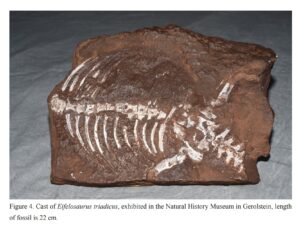
The Regional Natural Park (RNP) of the Monts d’Ardèche, located in south-eastern France, became the Monts d’Ardèche UNESCO Global Geopark in September 2014. This territory possesses significant geological structures, including numerous and rich Middle-Late Triassic vertebrate tracksites. The UNESCO Global Geopark label helped to formalize a long-standing partnership for the study of this ichnological patrimony […]
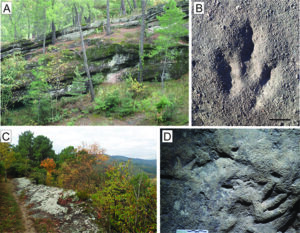
The Digne-les-Bains ammonite slab is one of the most impressive geosites of the UNESCO Global Geopark of Haute-Provence and Réserve Naturelle Nationale Géologique de Haute-Provence. Its importance rests on the number of fossils as well as their size and the high quality of the outcrop and its huge potential. It is an important subject for […]
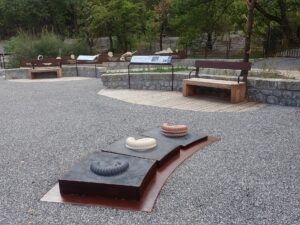
The Lower Jurassic Posidonia Shale of Southern Germany is famous for its excellently preserved fossils. First of all, the large and spectacular ichthyosaurs, pterosaurs and crocodiles impress. Fish, crinoids, ammonites and belemnites are witnesses of a very special living world in the former Posidonia Shale Sea. The rather small and inconspicuous bivalves, brachiopods and serpulids […]
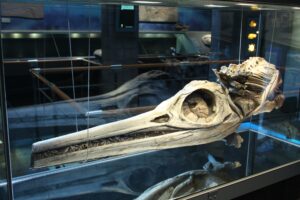
The Nusplingen Plattenkalk is a Solnhofen-type fossil Konservat-Lagerstaette in the southwestern part of the Swabian Alb, which is scientifically exploited by the Stuttgart Natural History Museum. The Nusplingen Plattenkalk formed in a deep lagoon surrounded by islands. The highly diverse and exceptionally preserved fossil fauna and flora allow a reconstruction of the Late Jurassic marine […]
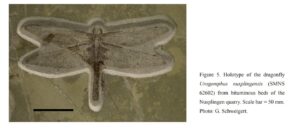
The Global Boundary Stratotype Section and Point (GSSP) of the Aalenian Stage (base of the Middle Jurassic), was established in Fuentelsaz (Central Spain) by the International Commission on Stratigraphy (ICS) of the International Union of Geological Sciences (IUGS) in 2000. This stratotype is one of the most important geosites of the Molina-Alto Tajo UNESCO Global […]
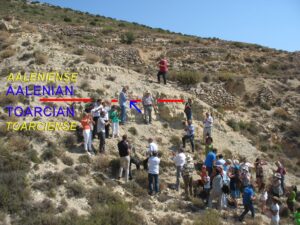
Located in France on the eastern edge of the Massif Central, the Parc naturel regional des Monts d’Ardèche, inscribed as a UNESCO Global Geopark in 2014, presents great geological diversity. This includes a sedimentary boundary between the Jurassic and Cretaceous, represented by limestone and marl. Fossils of crocodilians have been discovered in these layers, highlighting […]
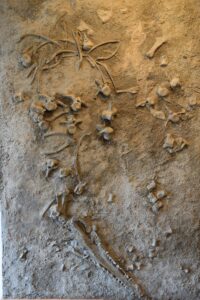
The low level of the Jurassic sea in the area of Bad Essen-Barkhausen (Wiehen Mountains, NW Germany) was a precondition for the migration of a herd of sauropods and theropods through this coastal area about 153 million years ago. The dinosaurs left at least 11 trackways on a single fine-grained siltstone layer and several more […]
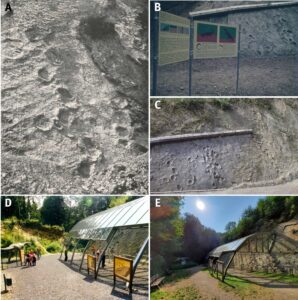
For many years, even before it was designated as Las Loras UNESCO Global Geopark, work was carried out to promote and protect the geological heritage of the territory. To this end, an innovative model of governance was introduced, involving local people in the management of heritage by means of citizen participation processes and Geo-volunteering. This […]
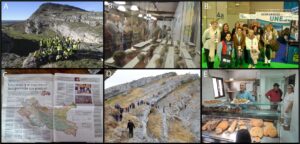
The Ammonitico Rosso is one of the most studied as well as most unusual facies developed in the Tethys Ocean, mainly during the Jurassic. This calcareous to marly-calcareous facies was typical on high seabeds seawards from the main platforms and emerged lands, sites where fine sediments accumulated discontinuously, while invertebrate animals tunneled the sea bottom […]
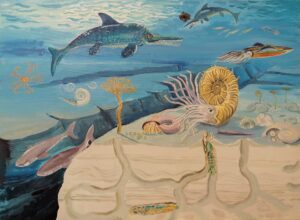
Numerous Upper Jurassic–Lower Cretaceous tracksites are found in the Maestrazgo UNESCO Global Geopark; sauropod and ornithopod tracks are abundant and there are some rare stegosaurians and theropods. The Lower Cretaceous ichnite sites are dominated by ornithopod tracks, while only one Upper Cretaceous site, containing theropod tracks, has been documented. Seven of these sites are classified […]
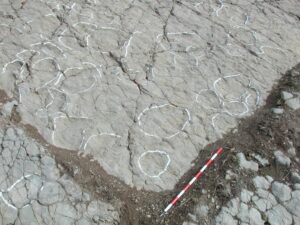
The current territory of the Maestrazgo UNESCO Global Geopark has provided fossils that pioneered dinosaur research in Spain. The first Spanish dinosaur, Aragosaurus ischiaticus (published in 1987), five other new genera of dinosaurs and six species were described from fossils found at Geopark sites. These are the sauropod Galveosaurus herreroi (Galvesaurus herreroi) in 2005, the […]
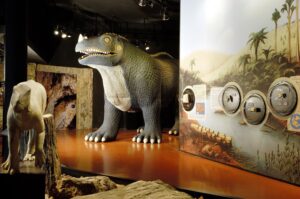
The cross-border Geopark Karawanken/ Karavanke was established in 2011 to reflect the diverse geological composition and varied and rich natural and cultural heritage of the area. The wealth of geological heritage is reflected in numerous, already existing geosites, exceptional and unique on a global level, as well as in newly determined mineral and fossil sites. […]
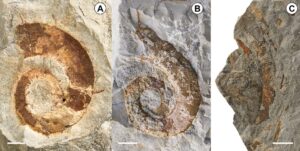
The historical stratotype of the Aptian Stage (Cretaceous) was defined in the Luberon UNESCO global geopark in the middle of the 19th century. Due to excessive urbanization launched in the early sixties, the best outcropping conditions are those found at La Tuilière, in the vicinity of Saint-Saturnin-lès-Apt. This is a privileged place, with conservation, educational […]
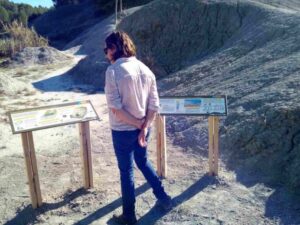
The Basque Coast UNESCO Global Geopark is known worldwide for its great thickness of Upper Cretaceous and Paleocene “flysch” formations. The K/Pg and P/E boundaries are among the most popular sites, together with the IUGS-ICS designated Selandian and Thanetian global stratotypes. However, an important section of the sea cliff outcrops is formed by an older […]
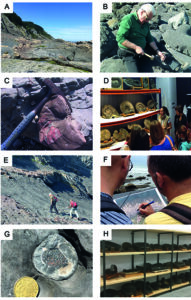
Iharkút is a Late Cretaceous (Santonian) vertebrate-bearing locality in the Bakony Mountains of western Hungary, where productive and continuous paleontological excavations have been carried out in the last twenty years. Fieldwork resulted in a very rich and diverse assemblage of terrestrial and freshwater animals, including fishes, amphibians, turtles, lizards, a freshwater mosasaur, pterosaurs, crocodilians, dinosaurs, […]
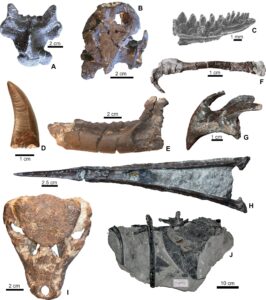
We review here key geological heritage elements of the Hațeg Country UNESCO Global Geopark (Southern Carpathians, western Romania) represented by latest Cretaceous continental vertebrate fossils and the sedimentary rocks enclosing them. Based on available geological and paleontological evidence, these animals were living on a tropical island. This paleogeographic setting led to the development of some […]
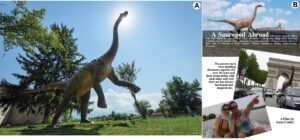
In 1898, when the first dinosaur eggs were discovered in Hațeg Country (which in 2005 became part of the UNESCO Global Geopark Network), not one dinosaur egg had ever been unearthed either in the vicinity or anywhere in Romania. Twenty years later, tens of sites bearing remnants of dinosaur eggs – of which at least […]
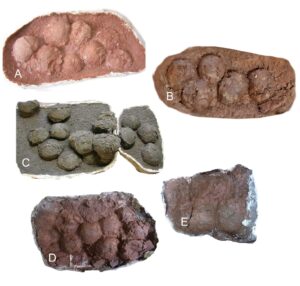
Visits to paleontological sites are one of the most popular geotourism activities, but their appeal may have drawbacks. Deciding which sites are suitable for dissemination and appropriate measures for their optimal conservation can be complex. Here, we present a geoconservation inventory of 15 Upper Cretaceous paleontological sites with dinosaur and other vertebrate remains from the […]
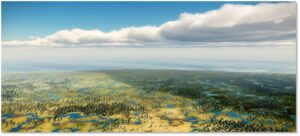
Despite its paleontological importance, the Messel Pit was under threat to become a waste disposal site, and its eventual designation as the first Natural World Heritage UNESCO geosite in Germany followed an intense fight in which numerous principles of geoheritage and geoscience popularization were explored. The UNESCO agenda 2030 for sustainable development is the basis […]
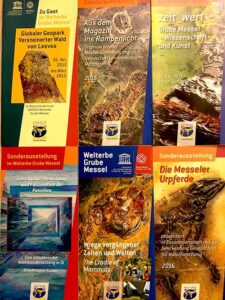
Anthropogenic climate change may result, within 200 years, in warm and equable climatic conditions not experienced on Earth for tens of millions of years. Ancient ecosystems under such “greenhouse” conditions may be seen as natural experiments, and their study may help us anticipate the future, should mediation fail. The Messel Pit, a UNESCO World Heritage […]
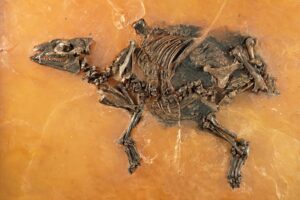
Some of the most spectacular fossil deposits of the European Tertiary are former maars located in old volcanic field areas. The Tertiary volcanic field of the High Eifel (THV) lies between the two Quaternary volcanic fields of the West and East Eifel and extends far into the West Eifel. The Eckfelder Maar lies on the […]
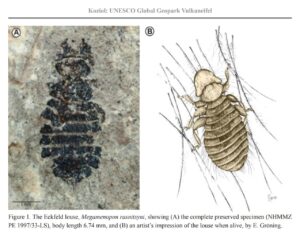
The Sobrarbe-Pirineos UNESCO Global Geopark, located in the Central Pyrenees, is a region of remarkable geodiversity that includes extensive Eocene fossil-bearing sites and constitutes an important archive of paleobiodiversity. The Sobrarbe-Pirineos Geopark hosts outcrops of Eocene formations bearing an unusual abundance and diversity of fossils from marine and continental sedimentary environments, making the Sobrarbe-Pirineos Geopark […]
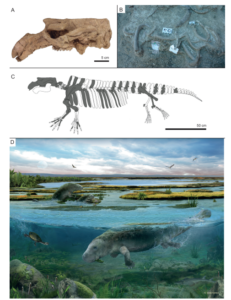
The “phosphatières du Quercy” are karstic fillings exploited for phosphate at the end of the 19th century. They yield countless continental fossils through some 30 million years, ranging from late early Eocene to early Miocene. This exceptional paleontological series documents the ‘Grande Coupure’, a major biogeographical event involving a profound renewal of vertebrate faunas, recorded […]
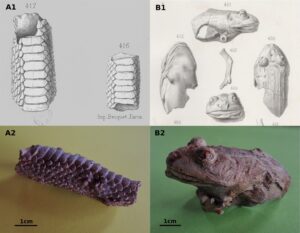
Some of the most interesting paleontological heritage of the Liguria Region is in the Beigua UNESCO Global Geopark, in Savona Province. The Geopark is characterized by high geodiversity and strong tourist traffic, being easily accessible and already having geological and paleontological visitor centers. The geosites of Stella Santa Giustina (SSG) and Maddalena–Ponte Prina (MPP) are […]
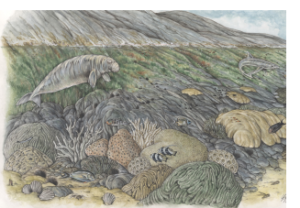
The Luberon early Oligocene fossil Lagerstätte yields exquisitely well-preserved fossils as testified by the remains of articulated skeletons, skin outlines, feathers and original pigmentation patterns. The fossils include plants, insects, amphibians, reptiles, birds and mammals from ancient lacustrine-terrestrial ecosystems of the early Oligocene. The fossil birds are especially important, including one of the most complete specimens […]
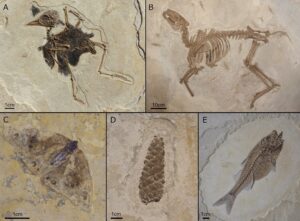
Trace fossils represent an important component of the Earth’s heritage that provide important keys for learning about the diversity and evolution of life and environments through time. They represent a rich and fragile geoheritage that requires special geoconservation measures. The Saignon tracksite, yielding thousands of tracks attributed to mammals, is located in the heart of […]
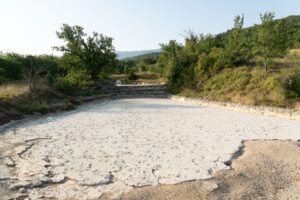
The transnational Novohrad-Nógrád Geopark situated in Northern Hungary and Southern Slovakia has several important Neogene fossil sites developed for geotourism. One of them is the lower Miocene paleontological locality complex at Ipolytarnóc , which has been well known since the middle of the 19th century. The site is the main geotouristic gateway to the geopark, […]
The Petrified Forest of Lesvos is a Protected Natural Monument showing standing and lying petrified tree trunks, preserved by intense volcanic activity in the early Miocene. The Natural History Museum of Lesvos Petrified Forest contributed significantly to scientific research, conservation, exhibition, promotion and international recognition of the Lesvos Island UNESCO Global Geopark, a founding member […]
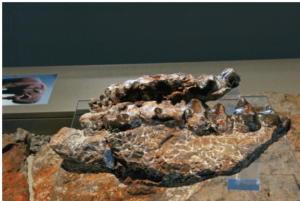
Neogene sedimentary rocks cover extensive areas of the Cabo de Gata-Níjar UNESCO Global Geopark (Almería, SE Spain) although most of the outcropping rocks are Miocene volcanics. The post-volcanic sedimentary rocks include three successive Messinian coral reef units. The lower reefs consist of coral patches of varying dimensions comprising Porites and Tarbellastraea, which grew on carbonate […]
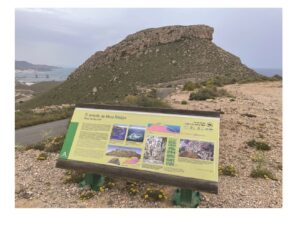
Granada Geopark, covering almost all of the Guadix-Baza basin, contains an exceptional and near-continuous fossil record of the evolution of Pliocene to middle Pleistocene land mammals (5–0.5 Ma). This period covers the endorheic (closed drainage basin) stage of this geological basin and, in this chronological framework, its record of the Quaternary period, mainly the Early […]
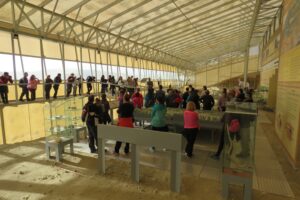
The Hondsrug UNESCO Global Geopark in the northeast of the Netherlands comprises the Hondsrug-complex, a prominent range of low till ridges created by forces of moving land ice and melt water. The unusual orientations of the ridges contrast with the usual direction of ice flow, and they are separated from each other by elongate depressions. […]
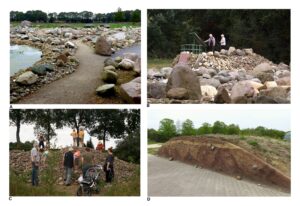
Foz do Enxarrique (FENX) is an open-air archaeological site from the end of the Middle Palaeolithic, with faunal remains and Mousterian industry, dated 44–32 Ka. The faunal accumulation shows evidence of human intervention. It can be seen as a paradigm for the interpretation of taphonomic processes typical of open-air sites and difficulties of interpretation. Foz […]
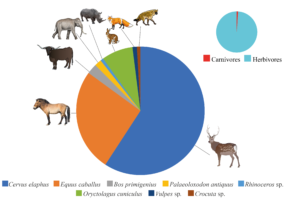
The Hohle Fels Cave in the Swabian Jura is a key site of the Central European late Middle and early Upper Paleolithic. The Aurignacian deposits with more than 90,000 lithic artifacts, numerous faunal remains as well as the presence of flutes, beads and mobile art objects, give an exceptional insight into the material culture between […]
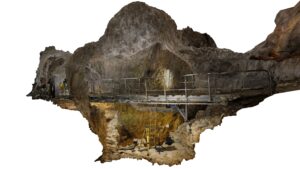
The Sobrarbe-Pirineos UNESCO Global Geopark shows an extremely well-developed underground karst relief as a result of the great abundance and thickness of its limestone formations. The most important Pleistocene vertebrate site within the Geopark is Coro Tracito Cave at Tella. The fossil association is made up exclusively of bones belonging to Ursus spelaeus from the […]
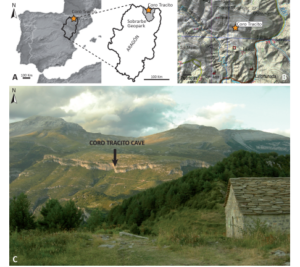
Geoconservation Research published a special issue on Paleontological Heritage and Geoconservation in UNESCO European Geoparks. The goal of this volume which was completely achieved was presenting geosites with fossil-based values and heritage in the green continent. Thanks to the experience and effort of our Guest editor, Prof. Dan Grigorescu, who invited many professors and experts from […]
